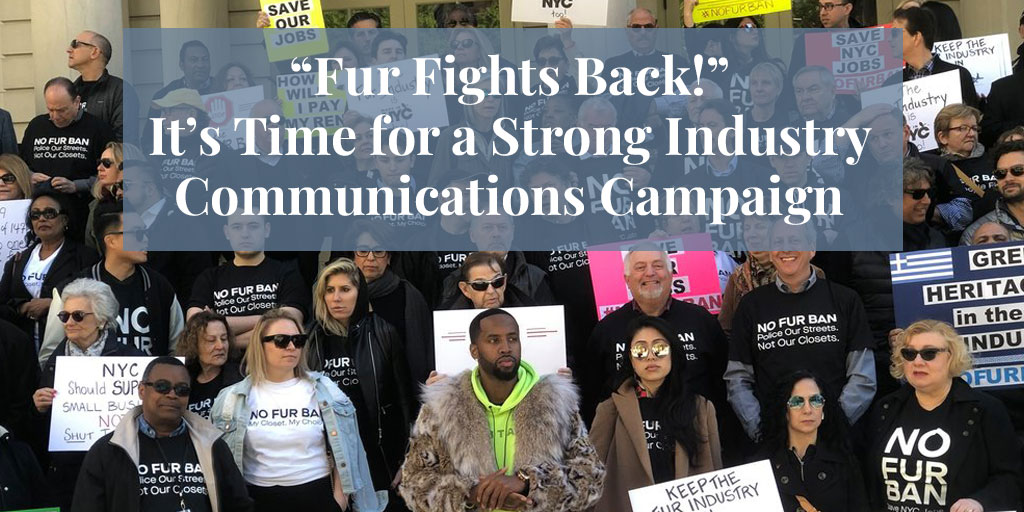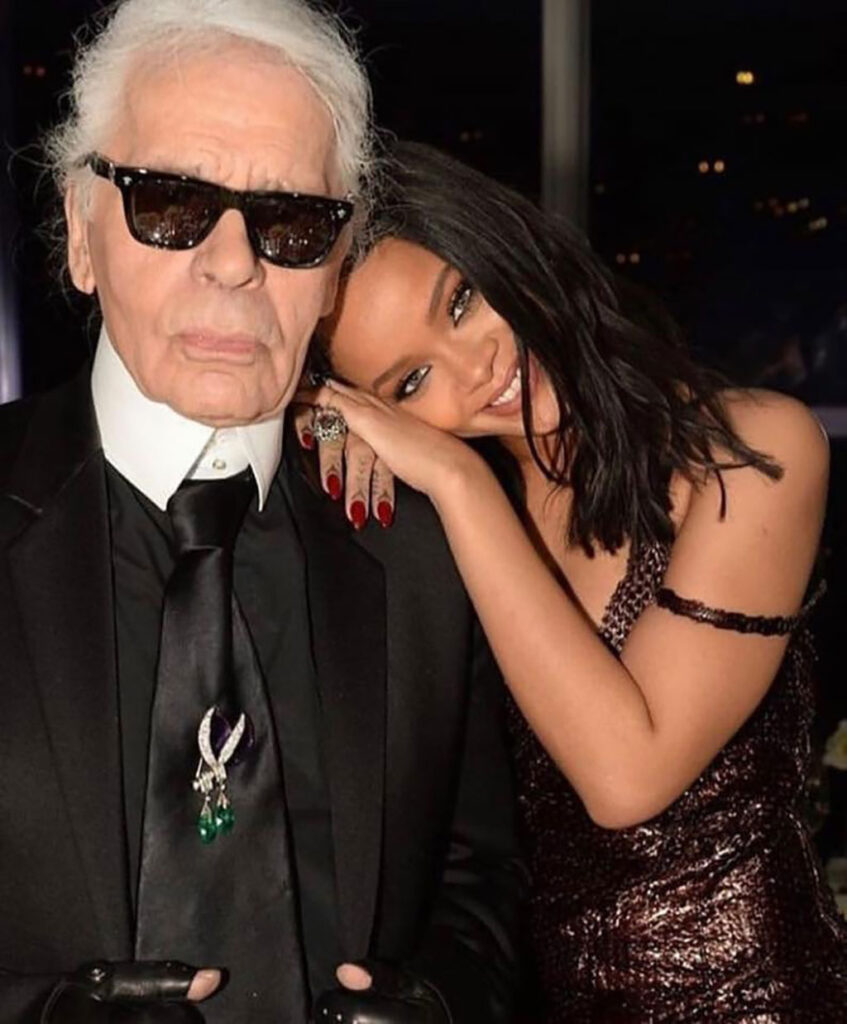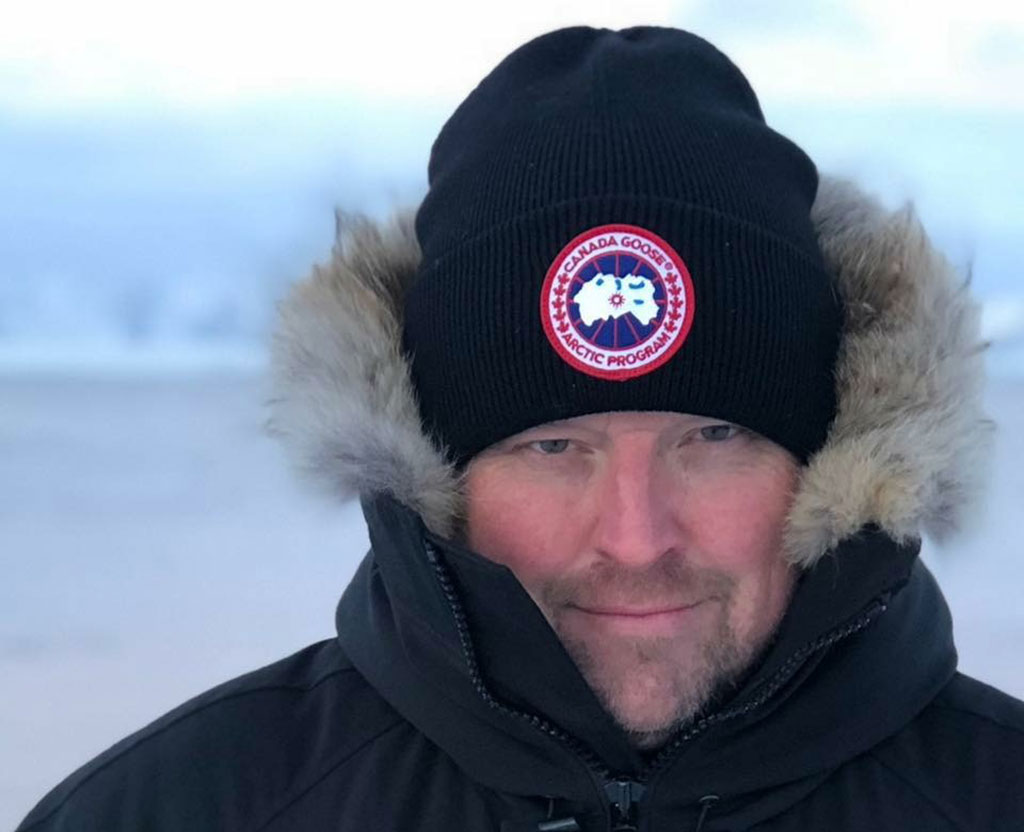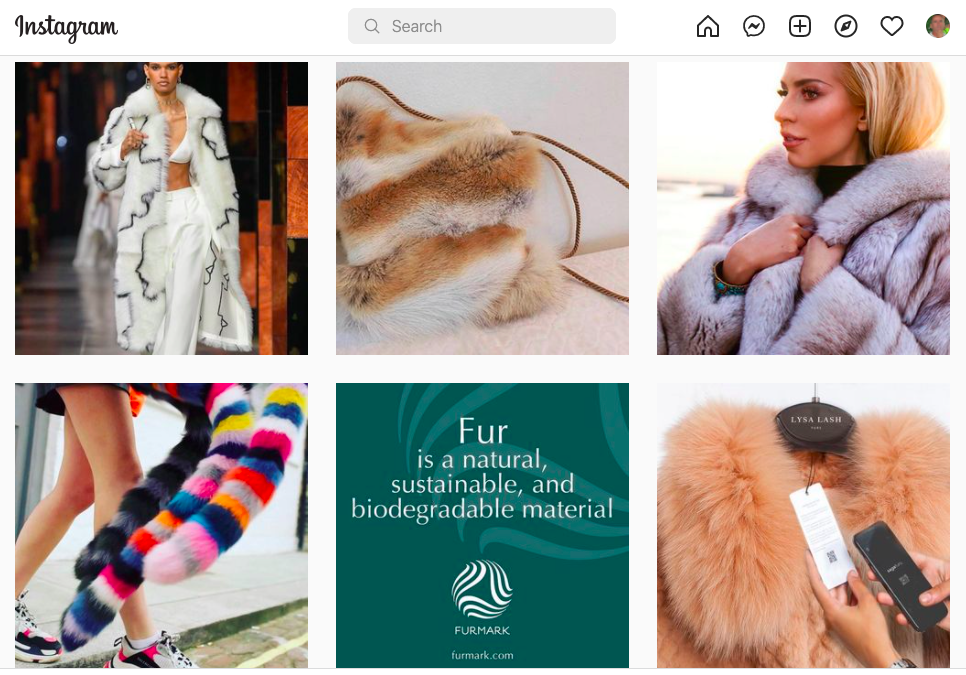
Fur is under attack like never before. Hardly a week goes by without news of some brand dropping fur, or a jurisdiction proposing to ban its production or sale. This tsunami of negativity fuels a self-reinforcing cycle: As major retailers (Saks, Neimans, Holt Renfrew) stop selling fur, successful brands (Canada Goose, Moose Knuckles, Mackage) have less incentive to stand up to relentless activist pressure – and, with less business at stake, it becomes harder for politicians to resist activist pressure for production or sales bans. Worse, the barrage of negative news can create the false but potentially self-fulfilling impression that “society” has decided it is no longer ethically acceptable to wear fur.
This cycle of negativity cannot be broken with the fur trade always on the defensive. Our rational and reasonable responses to fur ban proposals or fur-free brands – if we get a chance to respond at all – are buried deep in media reports where few people see them.
Two proactive fur trade initiatives are the International Fur Federation’s sustainability and FurMark campaigns. Both programs include important communications and consumer-reassurance tools. But, alone, they are not enough to push back the tsunami now engulfing our industry.
What is desperately needed is a bold strategy to move the North American fur industry off the back foot and into attack mode. We must aggressively reclaim control of our own story, to support designers, retailers, and politicians – and to give consumers the “social license” to buy and wear fur.
A Strategic Approach

For much of the 20th century, movie stars and other celebrities provided an extraordinary media profile for the romance and glamour of fur. But while Jennifer Lopez, Madonna, Rihanna and other celebs continue this tradition, many others now choose to avoid the controversy that activists have created around fur. We can’t expect celebs, or brands, or anyone but ourselves to fight our battles.
A major challenge for the fur industry, of course, is that we lack the human and financial resources required to mount the large-scale advertising and PR campaigns that bigger industries use to manage such problems. Instead, we should take a leaf from the activist handbook: We must start using the news media to carry our messages, by providing “stories” that journalists cannot resist.
PETA president and co-founder Ingrid Newkirk once said: “We’re media sluts. We didn’t invent the game, we just learned to play it.” PETA understands that the media are content-devourers. Journalists need stories, lots of stories, the more sensational the better, and activists learned to provide them.
It’s time for the fur trade to generate more newsworthy stories of our own. And because the fate of the fur industry does not interest most people, the trick is to show how anti-fur campaigns actually threaten the interests and welfare of Joe (and Josie) Public.
The good news is that a strong “Fur Fights Back” campaign can become a media story in itself. This approach was road-tested when we launched Furisgreen.com, a decade ago. We “seeded” the campaign with some billboards in major cities and a few paid ads in national papers, and the phone began ringing. Our claim that “fur is green” was so unexpected, that it was “news”. (Note: “Fur is Green” is now a registered trademark in Canada and the US, belonging to the Fur Council of Canada.)
The thing to understand is that it’s not the media’s job to broadcast our messages, no matter how intelligent or worthwhile they may be. Their job is reporting “news”. If we package our messages into a “campaign” that provides a new perspective on a controversial and timely issue, the media will report on it – especially if we include an emotional element. And remember: despite how discouraging media coverage of our issues can be, most journalists are not animal activists. Activists have just done a better job playing the media game.
The “Stories”

So what kind of fur stories might be exciting enough to be considered “newsworthy” by journalists? Here are a few ideas to start the ball rolling:
1. Anti-fur campaigns undermine wildlife management programs that protect property, livestock, and human health. Wildlife biologists and trappers should warn the public that over-populated raccoons (and other species) can spread rabies and other dangerous diseases. Increasingly abundant coyotes prey on livestock, pets – and now sometimes even attack humans. Over-populated beavers can flood homes, roads, and natural habitat. Raccoons, foxes, and other predators kill ground-nesting birds, sea turtle eggs and young, and other endangered species. The truth is that wildlife populations will still have to be managed, even if we don’t use their fur. (Does a child have to die from a rabid raccoon bite before the important role of trappers is recognized?) If activists succeed in destroying consumer markets, then tax-payers will end up footing the bill for managing wildlife. Without the market incentive provided by companies like Canada Goose, for example, governments will have to reinstate bounties to manage coyote populations – as they did not so many years ago. So coyotes will still be killed, but they will be left to rot in the woods and the fur will be wasted. Is this really a more ethical treatment of wildlife?
2. Campaigns against mink farming are an attack on rural communities, the people who feed and clothe us. Mink farmers should encourage mainstream agriculture – including vets and scientists – to denounce the current attack on mink farming as the thin edge of an orchestrated activist campaign to undermine family farms and animal agriculture. The same activist groups that have long targeted the fur trade are now openly campaigning against eating meat and wearing leather and wool. While calling for full veganism, they also push for “reforms” that raise costs for farmers, to make animal agriculture less viable – but it is consumers who will pay the higher prices for meat, eggs, dairy, and other animal products. Mink farming is a small sector but plays a key role in the agricultural cycle: recycling wastes from other sectors (the parts of pigs, chickens, and fish that we don’t eat), while composted mink farm wastes provide valuable organic fertilizers to restore the fertility of the soil, completing the agricultural nutrient cycle.
3. Anti-fur activists use Mafia “protection racket” tactics of harassment and intimidation to force brands and retailers to drop fur: “Do as we say or we will destroy your business!” This should be a concern to anyone who believes in democracy. Canada Goose and other brands are not dropping fur because consumers don’t want to buy and wear these products; our cities are full of young people wearing fur-trimmed parkas each winter. These companies stop using fur because store security and brand reputation costs become too high. Is this the kind of society we want, where aggressive minorities impose their beliefs with intimidation? Surely we all have a right to make our own decisions about the appropriate use of animals. This is not a “fur issue”; it is an issue that should concern all citizens, journalists, and politicians, whatever their feelings about fur!
4. Anti-fur campaigns threaten our health and undermine efforts to develop “greener” economies. The apparel industry is the second-biggest contributor to pollution and greenhouse gas emissions. As the fashion industry confronts the tremendous waste caused by throwaway “fast fashion”, environmentalists say we should be buying less but better-quality clothing, and keeping it longer. Seen in this perspective, using fur makes more sense today than ever! Fur is, in fact, an excellent example of the responsible and sustainable use of renewable, natural resources, as promoted by the World Conservation Strategy. Where are activist campaigns leading us? Sixty percent of our clothing is already made from non-renewable, non-biodegradable petrochemicals; we now know these clothes shed vast quantities of micro-particles of plastic into our air and waterways – plastics that are now being found in marine life, and even in foetuses and breast milk. Cruelty-free indeed!
5. Anti-fur campaigns are insulting and unfair to people who live closest to nature: thousands of farm families, First Nations and other trappers, skilled fur artisans maintaining unique heritage craft skills, and many others. Activist campaigns are not a victimless crime! They attack the livelihoods, cultures, and reputations of real people – people who work hard and do not have the time (or inclination) to perform media stunts for publicity! These are decent people with families – not the monsters they would have to be if the things activists say about the fur trade were true. The sensationalist lies that activists shamelessly spread about the people of the fur trade would not be tolerated if any other race, religion, or lifestyle were so viciously targeted. Simply put: animal extremists have degenerated into politically-correct hate groups, with the people of the fur trade as their number one scapegoat. But intolerance and bullying are never cool; it’s time that anti-fur activists were called to account for their hate-mongering.
Reclaiming Our Story

Each of these “stories”, and others, should be delivered by the most credible and well-trained spokespeople we can find in the industry: First Nations and other trappers, farm families, skilled craftspeople. Women should be well represented, and young people who know how to get our stories out on Instagram and TikTok!
We should also remember that emotion trumps logic in the media. Activists have exploited this well, but fur people have emotions too. Activist campaigns are unfair and insulting to real people. They put people’s livelihoods and cultures at risk. And when they prevent trappers from responsibly managing wildlife, they put public health and safety at risk as well!
Not least important, anti-fur campaigning works against current efforts to improve sustainability in the apparel industry. And activist bullying tactics threaten democracy and our right to make our own ethical choices. These are not just fur issues, these are issues that should concern everyone who believes in a free and open society.
As this brief summary shows, the current attack on the fur industry is an attack on a range of important societal values and interests. But no one else will tell these stories if we don’t. It’s time for a coordinated fur industry communications strategy.
***
To learn more about donating to Truth About Fur, click here.











Love it when the fur industry fights back against those animal rights characters. I have always believed that furs make women look very special, and still do.